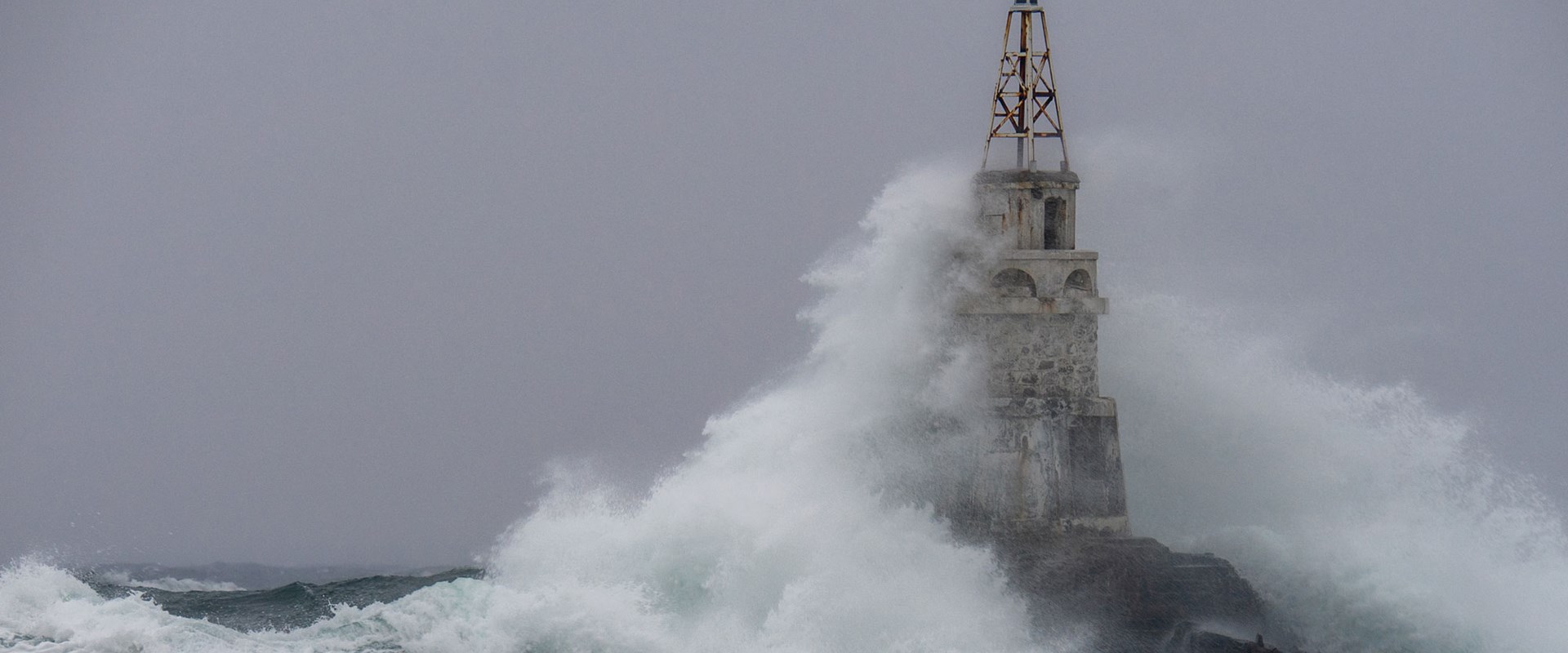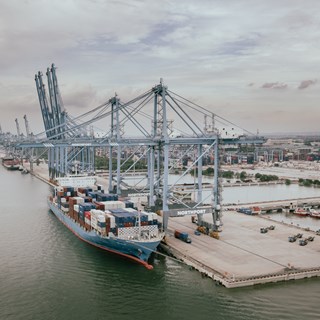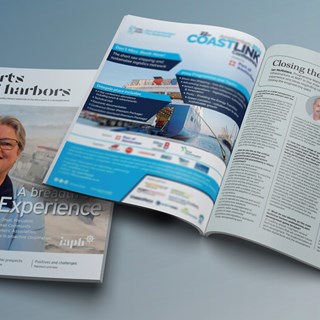
Climate change - weathering the storm
Ports, marinas, harbours, and shipyards face many challenges regarding the risks associated with climate change and extreme weather.
1 May 2022
Because of their locations along open coasts or in low-lying estuaries and deltas, they are exposed to various natural hazards, such as rising sea levels, storm surges, waves, and winds. With an ever-increasing drive to improve sustainability, and the need to adapt to the physical impacts of climatic changes, ports and harbours are now facing many challenges across every aspect of their operations.
In recent years, global changes in climate and weather extremes have had a measurable impact on the economic effectiveness of vital maritime hubs. In October 2021, cargo ship Zim Kingston lost more than 100 containers overboard in gale force conditions off the coast of British Columbia.
Meanwhile, a new study by the US National Center for Atmospheric Research predicts that if greenhouse gas emissions are not reduced, 90% of ports will face severely increased economic pressures by 2100. The study highlights the most affected ports are likely to be in the Pacific Islands, Caribbean, and the Indian Ocean, followed closely by ports in the North African Mediterranean and Arabian Peninsula, covering the vast majority of important global maritime hubs.
When port operations are halted or delayed, the resulting effects are felt across the entire supply chain. This was recently highlighted by lengthy port delays caused by a combination of factors, including COVID-19 and staff shortages, which then had a measurable economic impact across the global logistical supply chain, threatening the delivery of goods and services across the world.
The challenge for ports and harbours is to plan for climate risks that could threaten operations. For example, frequent and more severe storms can cause damage to infrastructure from erosion and storm surge inundation, which can be costly, with operators having to increase maintenance or replace critical elements of the port itself, mainly where existing coastal defence structures are no longer fit for purpose.
However, adapting to changes in water levels is difficult given the unpredictability surrounding the rate of sea level rises, as well as the practicalities of replacing or updating the infrastructure. Additionally, significant long-term increases in water levels could lead to navigational constraints. They could render berths unusable or unsafe, which could mean limited port capacity, affecting business performance and the continuity of ports.
Considerations must also be made for broader port operations outside vessel management processes. For example, threats related to higher temperatures can create new challenges within port-side operations. The thermal impact on load-bearing equipment and paved surfaces generates the risk of equipment failures or unusable roads and railway lines.
For port operators, effective preparation and risk management should therefore center around the ability to bridge data and knowledge gaps. They need to understand every aspect of the operational management of vital equipment and infrastructure, giving them the ability to plan and create effective risk-management strategies.
Key to enabling this will be the application of reliable, cost-effective technologies, combined with a knowledgeable consultancy that can support operators in applying technologies and newer ways of working efficiently and effectively. By accurately assessing their operations and equipment and making informed decisions, ports and harbours can build resilience against climate change and extreme weather, thereby protecting the future of their operations.
Effective and accurate monitoring of assets and infrastructure allows operators to conduct detailed vulnerability assessments, which allows for precise maintenance, adaption, and risk management planning through identifying and gathering critical information needed for informed decision-making. As a vital part of this, it is essential to ensure staff have the training they need to create frameworks that will ensure compliance without affecting operations. Ports and harbours should carry out thorough risk assessments across their assets and operations, allowing operators to develop management processes that best meet the needs of the business. This way, potential risks will be identified and planned for, while cost and operational impacts can also be forecast and understood.
While climate change and the escalation of extreme weather events have long been on the agenda, recent storm events and the impact of COVID-19 have placed a new emphasis on the scale and breadth of the challenges port operators are facing. With the increased likelihood that these extreme weather events will continue to intensify in frequency and severity, and with the regulatory drive continuing to place growing pressures on budgets and operations, ports and harbors must plan and protect their assets, people, and infrastructures.
Effective adaptation to climate change and extreme weather risks can be achieved by taking a holistic asset and infrastructure monitoring and maintenance approach. This way, port operators can quickly adapt to evolving conditions and prepare effective risk management strategies. However, this does not mean a significant shift in operational practices.
Adapted from an article published in Ports & Harbors magazine, April 2022

Greg is a Senior Associate at BMT and leads the firm’s global campaign related to climate risk and resilience. Based in Brisbane, Australia, Greg has over 25 years of experience in natural hazard and climate change planning and adaptation studies with planning, transport, and conservation authorities.

Shivaprakash Heads the Consulting and Energy Transition department in BMT’s Singapore office. He has 27 years of experience in Energy and Coastal Infrastructure projects. He is a Chemical Engineer by training with MBA in Finance, and a PMI certified Project Management Professional (PMP).

Jaret Fattori
Jaret Fattori's article in Port Strategy discusses how ports are adapting to climate change and IFRS S-2 regulations. Emphasising the shift towards sustainability through digital integration, decarbonisation, and innovative fuel alternatives, he explores the significant role of collaboration in advancing port sustainability and innovation.

Ian McRobbie
Ian McRobbie, our Programme Manager for Ports and Maritime Infrastructure, was interviewed by Port & Harbors to discuss how infrastructure companies are collaborating with ports to enhance port infrastructure and operations.

Jaret Fattori
The regulatory landscape in Canada is evolving rapidly, reflecting a growing awareness of the need for more sustainable practices and responsible business conduct.

N/A
We address certain key topics that have been brought to our attention by our valued clients during their assessment of inspection reports.